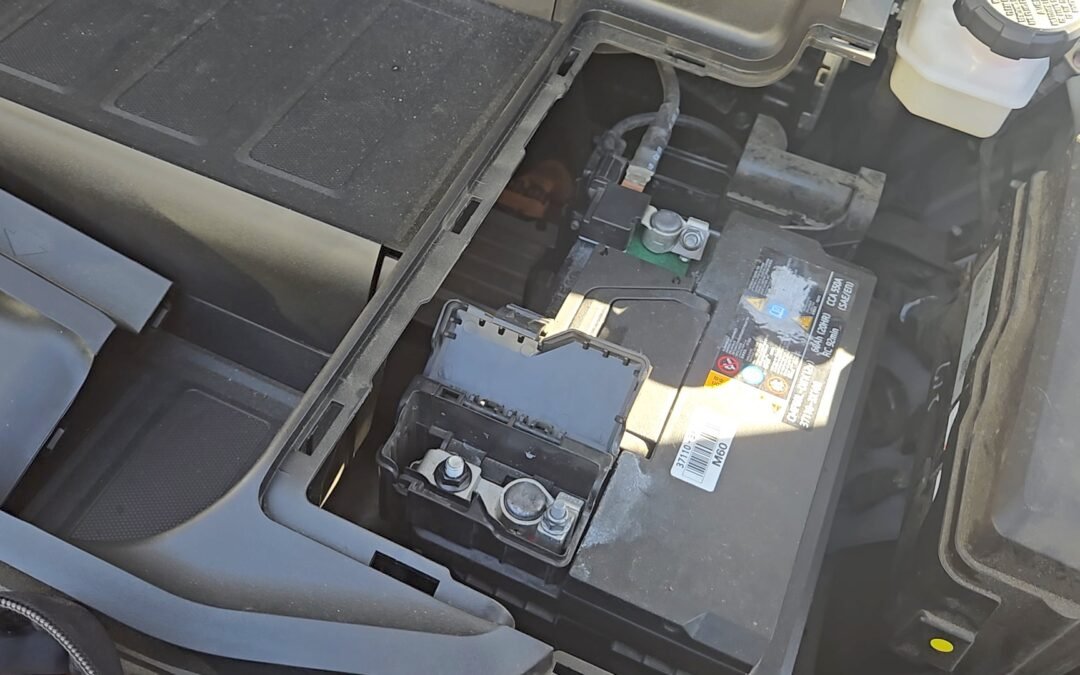The Beginning
The Sudden Silence of a Dead EV
I’ll never forget the tone my wife used when she called me into the garage that day. It was the kind of tone that immediately conveyed something was amiss. Our trusty Hyundai Ioniq 5, usually ready to spring to life, was dead. Was it a dead 12V battery? The remote key fob, normally a reliable sidekick, yielded nothing but silence. Stepping inside, the expected glow of the dashboard lights was absent, and even plugging into our home charger elicited no response.
dead 12v battery
The Diagnostic Dilemma
My mind racing, the first question was the obvious one: what’s wrong? Initially, we suspected a simple culprit – a dead battery in the key fob. However, when stepping on the brake pedal failed to ignite the car’s systems, our focus shifted. The prime suspect was now the 12V battery, a critical yet often overlooked component in Electric Vehicles (EVs). But how could I be certain?
Seeking Clarity with Data
To cut through the uncertainty, I turned to a trusted ally – a volt meter. Measuring the DC current of the 12V battery, I sought a clear indicator of its health. As a rule of thumb, a healthy 12V battery should register a voltage of approximately 12.6V to 12.8V. I held my breath as the reading stabilized on the volt meter’s screen: 11.8V. The evidence was clear – the battery was indeed in poor health. This reading, below the recommended threshold, confirmed my suspicions: the 12V battery was the root of the problem. But what led to its demise, and how could I revive my EV to its former glory?
Options to Fix My Dead 12V Battery
When faced with a dead 12V battery in your EV, there are several paths to recovery. Each option has its merits, ranging from quick temporary fixes to more permanent solutions. Let’s explore the possibilities:
Option 1: Jump-Starting with a Car Jumper or Roadside Assistance
- Method:
- Utilize a Car Jumper (if available): Connect your EV’s 12V battery to a power source using a reliable car jumper. For your convenience, we recommend the following top-rated options:
- VTOMAN X7 (Amazon Affiliate Link): A versatile choice that also comes with a built-in air compressor, perfect for inflating tires. (I personally own two of these for their convenience and reliability!)
- GOOLOO GT4000S (Amazon Affiliate Link): Highly recommended by various YouTubers for its efficiency and durability.
- Alternatively, if you have access to an Internal Combustion Engine (ICE) car, you can use it to provide the jump-start.
- If stranded, consider calling AAA or a roadside assistance service for aid.
- Utilize a Car Jumper (if available): Connect your EV’s 12V battery to a power source using a reliable car jumper. For your convenience, we recommend the following top-rated options:
- Outcome: This is a temporary fix, aimed at getting your EV operational to reach a safer location or a repair shop.
- Important Note: While driving, the high-voltage system will charge the 12V battery. However, the battery’s ability to retain this charge after the vehicle is idle again is uncertain. This method does not address the underlying issue.
Option 2: Trickle Charging with a Battery Tender
When your EV’s 12V battery is dead, a trickle charge can be a gentle and effective way to revive it. This method is particularly useful if you don’t want to spend money on a new battery just yet or if you’re looking for a more leisurely charging approach.
- Process:
- Safety First: Disconnect the black (negative) connector from the 12V battery to prevent any accidental short circuits.
- Connect the Battery Tender: Attach your chosen battery tender to the 12V battery, carefully following the manufacturer’s instructions to ensure a safe and effective connection.
- Charging Time: Allow up to 72 hours for the trickle charging process to complete. However, the actual charging time may vary significantly depending on the battery’s condition and the tender’s output. For instance, my own battery was fully charged within 20 hours using a similar setup.
- Monitoring Progress: Keep an eye on the battery tender’s LEDs to track the charging status:
- Red (Flashing): Indicates that the charging process is in progress.
- Green (Solid): Signals that the charging is complete, and your 12V battery is now fully revived.
- Recommended Battery Tenders for Trickle Charging:
- For your convenience, we’ve selected two reliable battery tenders available on Amazon that can efficiently trickle charge your EV’s 12V battery:
- Option 1: Battery Tender Junior(Amazon Affiliate Link)
- Pros: Slow and gentle charge, suitable for maintaining battery health.
- Cons: Charging speed is relatively slower at 750mA.
- Option 2: Battery Tender Plus (Amazon Affiliate Link)
- Pros: Faster charging at 1.25A, which I personally prefer and use for my own EV.
- Cons: May not be suitable for all battery types; ensure compatibility before purchase.
- Disclosure: This article contains affiliate links, meaning at no additional cost to you, we may earn a commission if you purchase through our links. Your support helps us continue to provide in-depth reviews and valuable content.
Option 3: Replacing the 12V Battery
Sometimes, the most effective solution is to replace the battery altogether. This ensures optimal performance and peace of mind, allowing you to drive your EV with confidence.
Battery Types for Consideration:
When selecting a replacement 12V battery, consider the following options, each with its pros and cons:
- a. Traditional Lead-Acid Battery:
- Pros: Least expensive upfront.
- Cons: May have shorter lifespan and lower performance compared to other options.
- b. Absorbent Glass Mat (AGM) Battery:
- Pros: Moderately priced, offers better performance, and longer lifespan than traditional lead-acid.
- Cons: More expensive than lead-acid, but generally more cost-effective in the long run.
- Recommended AGM Battery Options:
- UPlus AGM-L60-UP (Amazon Affiliate Link): A reliable choice for those seeking a balance between performance and cost.
- MARXON AGM BCI47 (Amazon Affiliate Link): Another popular option, known for its durability and moderate pricing.
- c. Lithium-Ion (Li-ion) Battery:
- Pros: Highest performance, longest lifespan, and lightweight.
- Cons: Most expensive option upfront.
- Recommended Lithium-Ion Battery Option (Specific to Hyundai IONIQ 5):
- HY1240I5-BH, 12V Lithium Battery for Hyundai IONIQ 5 (Amazon Affiliate Link): Designed specifically for the Hyundai IONIQ 5, offering superior performance and a long lifespan.
Case Study:
After conducting a thorough cost analysis, I opted for the UPlus 12V AGM Battery (AGM-L60-UP), striking a balance between performance, lifespan, and cost. This decision provided me with the peace of mind that comes with knowing my EV’s 12V battery is reliable and efficient.
Decision Time:
Consider your priorities (cost, performance, convenience) and the current state of your vehicle to choose the best option for your dead 12V battery. If you decide to replace the battery, ensure to dispose of the old one responsibly.
Disclosure: This article contains affiliate links, meaning at no additional cost to you, we may earn a commission if you purchase through our links. Your support helps us continue to provide in-depth reviews and valuable content.










Recent Comments